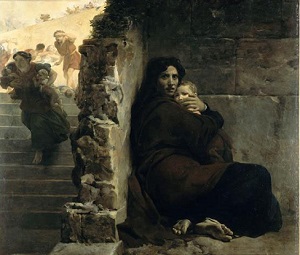Bijbehara town is observing a shutdown in memory of the scores of Muslim protestors shot dead by the BSF twenty years ago. Here is a condensed version of a scene in the aftermath of the massacre, written on that fateful Friday.
BIJBEHARA: A blood-soaked skull cap lies here, amid hundreds of shoes and rubber sandals, some in children’s sizes.
Residents in this small town of south Kashmir have marked the area where India’s paramilitary Border Security Force (BSF) opened fire on demonstrators, killing scores of them.
“They gave no warning, nothing,” says 27-year-old storekeeper, Nasir Hussain, who was among the marchers. “They just shot.”
The shoes and other scraps of clothing were dropped as terrified marchers scrambled to try to find cover in the narrow main street of Bijbehara, about 40 km south of capital Srinagar.
Residents say the protesters had marched for 25 minutes from the town’s main mosque after Friday prayers. BSF troops trapped them by blocking both ends of the street and allegedly opened fire without provocation.
The demonstration was to protest against a week-old siege at Srinagar’s Hazratbal mosque, Kashmir’s holiest Muslim shrine, where India’s soldiers have sealed off a group of armed militants besides some civilians.
They gave no warning, nothing, they just shot.
It was unclear how many people took part in the march. Some said they were in thousands.
A government statement said the BSF which has won a reputation for brutality in Kashmir’s anti-India uprising, returned fire after militants started shooting at them.
But a senior government officer, unaware of the statements, said there would have to be a full investigation into the killings.
“It is a major tragedy. The facts are certainly very grim,” he said, after inspecting the scene.
He said he had the names of at least one woman and four young teenagers among the dead.
Journalists visiting the town were manhandled and ordered away by soldiers, who confiscated films, tore up notebooks and smashed at least one camera.
In a nearby town, just a kilometre away, reporters saw the bodies of a middle-aged man who had been shot in the chest. Nearby residents said he was killed by the BSF on Friday night.
Authorities say some lives could have been saved if there had been better facilities at Bijbehara’s small district hospital. He said the local ambulance, in particular, was rickety and had trouble starting in the cold, autumn weather.
Journalists visiting the town were manhandled and ordered away by soldiers, who confiscated films, tore up notebooks and smashed at least one camera.
Many of the Bijbehara wounded had been taken to hospitals in Srinagar. In the city’s Hospital for Bone and Joint Surgery, doctors said they worked through the night.
A doctor at the Bone and Joints hospital says the hosptal took in 60 wounded from Bijbehara, of whom three had died. Two amputations were carried out. Ten to 20 wounded were also taken in from clashes between protesters and security forces in Srinagar.
He said it was the biggest influx of wounded he had seen at the hospital in a single day since the rebellion began.
In a hospital bed, nine-year-old Gauhar Sultan’s eyes are wide with pain and fear. Bandages covered bullet wounds to his hip and armpits
His uncle, Bashir Ahmad Hakim, says the boy was not even part of the demonstration.
“He was trying to help the wounded and the BSF shot him.”












